- Home
- Tom Clancy
Into the Storm: On the Ground in Iraq Page 8
Into the Storm: On the Ground in Iraq Read online
Page 8
On the other hand, the Sheridan came with serious drawbacks. Its aluminum underside offered little protection against mines. The remedy for this problem, three- or four-inch belly armor bolted underneath, meant that the Sheridan could no longer be air-dropped. The aluminum armor on the front and sides didn't offer a lot of protection, either. This made the Sheridan especially vulnerable to NVA RPGs. Worse, the Sheridan's cannon used what is called combustible-case ammunition (This was the Army's first attempt at combustible-case ammunition. Though there were problems with it, the Army continued to correct these problems. The 120-mm combustible-case ammunition on the M1A1 works very well.) During that time, all too often, when you were firing a number of rounds in a short time period--as in a fight--still-burning residue from incompletely consumed rounds would often stay in the chamber, and you'd get a premature detonation. You don't want to be inside a Sheridan when that happens.
Still, for all that, the Sheridan was an improvement over the older M113s, and the troops welcomed them. Meanwhile, they had to learn how to use them. They had to learn to drive, load, shoot, and maintain them, and the vehicle commanders had to be taught how to command them.
When the Sheridans arrived, Brookshire asked Franks to draw up the new equipment training program--a job very like the one he would have on a larger scale twenty years later as brigadier general in Grafenwohr for the Seventh Army Training Command in Europe. There he put together the new equipment training programs for the M1 tanks, Bradley fighting vehicles, and MLRSs (Multiple-Launch Rocket Systems), then newly arriving in Europe. In Di An, the job was smaller, but more immediately pressing. Second Squadron would be taking the Sheridans into combat in only a few weeks.
For the training program, they had some help. The Army sent a team along with the Sheridans to teach the squadron's crews about the vehicle--about how to drive it, how to operate the turret, and about maintenance (both in the shop and at crew level). But it was Franks's responsibility to train the crews how to fight with the Sheridan and to determine whether they were combat ready. He wanted to create a rite of passage.
Under Franks's direction, the noncommissioned officers of the squadron built a crew qualification course near Di An, where crews would have to pass a series of tough, realistic exercises with strict standards. On the course, Sheridan crews would fire at a number of situational targets, that is, standard silhouette targets that replicated the kinds of situations they were likely to face in combat. There also were a few hard targets--damaged vehicles were used for that purpose. For these exercises, live ammunition was used and tank crew examiners rode along in the vehicles when they were shooting to score and critique the crews. If the crews didn't pass, they shot again until they did. At the end of the training, there was a graduation course. When they passed that, they were certified ready for combat.
It was a good program, and it paid off. When 2nd Squadron crews completed Fred Franks's training program, they were ready to fight with the new vehicles, and to fight with them in units.
ACTION
In early October, the squadron was sent to Loc Ninh, about thirty kilometers north of An Loc, with a mission much like their earlier operation in August, to secure both the road to An Loc--Highway 14--and the area around Loc Ninh.
Loc Ninh was a village of close to fifteen hundred people (three or four thousand people lived in An Loc, which was the market town and commercial center for the district). Around and about Loc Ninh were farms and rice paddies, and a small logging industry operated in the forests nearby. The road was the only access for the local people to their markets, and the Army needed the highway for military convoys to resupply 2nd Squadron. The North Vietnamese and the Viet Cong tried to close the road by laying mines and setting up ambushes. There were quite a few NVA around Loc Ninh, and Franks and the squadron saw constant action, sometimes two or three times a day.
Just as on the road to An Loc, the squadron set up a fire support base for the tank company, the artillery battery, and the forward command post element. (Franks named the base "Marge," after his daughter.) From there, the cavalry troops would fan out in their own areas of operation, searching for the enemy. When the cavalry troops found NVA units, they'd call in artillery and, if necessary, the tank company, and usually air. The artillery battery and air would fix the enemy in one place, while the cavalry troops and, as needed, the big fist of the tanks moved in and destroyed or captured them.
Franks or Brookshire, meanwhile, would be in a helicopter. Whoever was in the air at the time the fight started would organize it. He'd isolate the enemy, call in artillery, call in TAC air and attack helicopters, and maneuver the ground troops and help them navigate. The other would be in the firebase--in the command M577s and on the radio a short distance away or with the troops. Rarely would they both be on the ground. Usually they could do more for the troops if one of them was in the air, as most of the action involved only one of the cavalry troops. The helos were based in Quan Loi.
Although Franks spent some time on the ground to get a feel for what the fights looked like from there, most of the time he was in the helicopter eight or ten hours a day. In between operations, he and the troop commanders talked together a lot, so Franks knew how best to help them in their operations when he was in the helicopter.
The OH-6 was a great scout helicopter. Its power-to-weight ratio and general aerodynamics made it an extremely agile machine, immediately responsive and capable of tight maneuvers over the top of the jungle close to the ground. It was crashworthy because of the small passenger bubble and high skids. However, as a command aircraft it was marginal because of the weak radios. For the times when the helicopter FM radio broke, which happened frequently, Franks took along an infantry portable radio, stuffed it next to his seat, and stuck the receiver next to his ear, pushing the handset if he wanted to talk. In addition to FM, it had both VHF and UHF radios, which Franks used mainly to talk to attack helos and close air support. The helo radios were activated by pressing a button on the floor by his foot. Talking on three radios with two different activation devices, plus looking at the ground and his map, and keeping his wits in a fight while sometimes getting ground fire was a challenge, to say the least. Though he considered that minor compared to the troops banging around in their ACAVs and Sheridans all day through jungle. . . .
They called it "busting jungle," where armored vehicles literally made a road through the forest by knocking down trees. Except for drivers, troops rode on the outside of their vehicles most of the time. It was cooler, and safer--paradoxically. If you were hit by an RPG, you were better off outside than inside. If you had to get inside fast, you could do that. Sometimes they hit bamboo thickets so strong, the M113s would be thrown back (when bamboo grows thick, it grows thick!). Sometimes they hit trees full of large biting red ants that would rain down on the troops. They'd have to stop and strip out of their fatigues and beat the ants off. Sometimes tree limbs would break off and come crashing down on top of the vehicles, or worse, on one of the soldiers. Some of these caused serious injury.
Every evening, after the day's operations were finished, Franks and Brookshire talked about the operations coming up the next day. They'd look at the mission and the enemy, and then at various hypothetical solutions to mission problems: What if they do this? Can we do that? After they had a good idea of how they wanted the operation to run, they would war-game it. Once they were satisfied, Brookshire would say, "OK, that's what we're going to do. Get the word out to the troops." Either Brookshire or Franks would call the troops on the secure radio and explain the operations to them. Though there'd be an entry in the squadron log, the bulk of squadron communications was oral. It was all talked through.
Few actions involved more than an individual cavalry troop, and rarely required the whole squadron to take part. There also were small-unit patrols and ambushes to stop the NVA and Viet Cong from mining Highway 14. Later, on the mission to Bu Dop, two infantry companies from 1st CAV Division were attached to the squadron
. They kept the NVA away from the road-clearing operation. Franks was almost constantly executing coordination of ground units, both mounted and dismounted, artillery, attack aviation, and air strikes. He was confident that Brookshire trusted him to handle all that; he valued the trust. Brookshire often left him to orchestrate actions, without interfering. Later, just after Christmas, Brookshire had to rush back to the States on an emergency leave. While he was away, Franks commanded the forward elements of the squadron. During that time, he took the squadron the rest of the way into Bu Dop.
They both had a lot of help. The troop commanders were first-rate. Ross Johnson, then Fred Kyle in Troop E, Max Bailey in Troop F, Paul Dickenson, then Sewall Menzel in Troop G. The tanks (H Company) were commanded by Bob Hurt, Malcolm Gilchrest, then Miles Sisson. The artillery (HOW Battery) was under George Fisher, then Dick Trageman. Senior NCOs also were outstanding. The command sergeant major in the 2nd Squadron was Ray Burkett, a highly respected and veteran CSM. Burkett was wounded in early April 1970 and had his left arm amputated. Second Squadron was a sharp, tight team.
Franks had particular help from his own team, both on the ground and in the air.
On the ground, in the S-3 shop, were Master Sergeant Bob Bolan and his assistant, Sergeant First Class Tommy Jones. In the air, Franks's pilots were Chief Warrant Officers John Mallette and Doug Farfel; his crew chiefs were Specialists John Lamontia and "Polack" Terzala. It was a tight team--a combat family. Bolan left a large impression on Franks. A wise veteran, he ran the S-3 shop like clockwork, and was on his fourth combat tour in Vietnam. He was killed in action as the squadron command sergeant major in July 1970.
COMMAND STYLE
Commanders have different command styles. If you spend any significant amount of time around Army people, you're going to encounter no little commentary about these differences. There is no right way to command, no template out of which commanders are stamped. Some commanders--to point out the more visible of differences--are loud, physically dominant extroverts; others are quieter, more soft-spoken, more given to indirection. Such opposites can be equally effective as commanders.
Grail Brookshire was a soldier's soldier, six foot one, 180 pounds, and sharp featured. When he spoke, his voice was clear and loud. When he reinforced a point, he was usually profane. Before taking over 2nd Squadron, he had been the regimental S-3, and knew the regiment's operations. At 2nd Squadron, he was technically skillful, and very aggressive: he took the fight to the enemy. Brookshire had a special affinity for tactics and a finely tuned sense for a fight. And he was always at the right place to conduct it. Simultaneously orchestrating ground maneuver elements, artillery, Army air, and Air Force air came naturally to him. (This "coming naturally" was a result of long study and practice.) As a complement to his tactical skills, he knew soldiers, what made them tick and what would inspire them to push their own edge. He believed in tight discipline and technical competence. But he also liked to stay out with frontline troops, working with them and sharing their hardships. And Brookshire liked to communicate with his subordinates. He liked to talk with them, to ask and take their opinions. He was a master at creating and building teamwork in a combat unit.
Franks and Brookshire took to each other as soon as they met. Their leadership styles and personal styles instantly meshed. Though Franks and Brookshire had never worked together until 2nd Squadron, it wasn't long before they built under fire a close working relationship. This grew into a close friendship, based on shared hardships and dangers, and shared concern for soldiers, this in spite of very different personal styles. Brookshire was boisterous, profane, and very direct. Franks was more quiet and soft-spoken, with a deep inner intensity, but also direct and profane when the situation called for it. They talked long and often, exchanging ideas about how to conduct a fight. And they both smoked cigars, a habit Franks had begun in the 11th Cavalry as a platoon leader. Together they developed a natural and comfortable working groove. Before long, it all became natural and instinctive.
On 7 December there was a regimental change of command, when Colonel Donn Starry took command of the 11th ACR from Colonel Jimmie Leach.5 Though he and Franks did not then know each other, the relationship that developed between them turned out to be as lasting as the one between Franks and Brookshire. For one thing, in May, in Cambodia, Donn Starry saved Franks's life. And later, back home in the States, they would work together again.
Most commanders are intelligent people. Not all of these intelligent people are smart commanders. That is to say, not all of these people make the best decisions for their commands.
Out of these intelligent people, most are readers (usually of history and military history); most also, these days, have earned advanced, professional degrees (I've met three-star lieutenant generals with Ph.D.'s); and some few are intellectuals. These will make a contribution during their career to the way the Army thinks about itself and its missions, both strategic and tactical. Donn Starry was one of the Army intellectuals, and so, it turned out, was Fred Franks. The relationship between Fred Franks and Donn Starry that began in the jungles near the Cambodian border would continue on into TRADOC. Part, at least, of the contribution Franks was eventually to make to the Army built upon the foundation that Donn Starry had constructed in the 1970s and 1980s, when he commanded first the Armor Center at Fort Knox and then TRADOC, the Training and Doctrine Command.
Starry's command methods inspired fierce loyalty in his subordinates. He always talked to and listened to soldiers and subordinate commanders. He also led from out front. He shared the dangers.
From the beginning, you never doubted that he was in charge. You always knew he was there and aware of what you were doing. He would monitor your combat actions on the radio, but usually broke in only when you needed something or when he could help in some way. He would meet you almost every day at your location. He didn't send for people to come see him; he'd go to them. When there was an action, he liked to stay with the lead squadron, and not in the rear at his command post, but otherwise, he left you pretty much to run your own show. As long as you were operating within his intent, he didn't intrude much into your business.
Starry encouraged and demanded initiative. He valued those commanders and others who could "orchestrate" a battle. You came to realize that nonjudgmental listening and focused questioning were major facets of his command technique. (Listening to your subordinates, without jumping in with comments, observations, or directives, is a good way to find out what is actually going on in a unit.) Starry certainly had a very good idea what he wanted done, but he would lead people to find that on their own, as though they themselves had discovered it. He would do that by asking questions and pointing out relevant facts and issues. If his subordinates still missed seeing what he saw--if they needed, say, to add an element to a plan--he would ask a question that would indicate that . . . or, if it came to that, he would interrupt and directly make himself clear. Otherwise, he'd listen. He was a commander's commander.
Starry also valued noncommissioned officers. He and his Command Sergeant, Major Don Horn, were inseparable. Horn was a wise senior NCO, with a lot of combat and soldier tactical savvy. When Horn had something to say on one of Starry's visits, Franks listened.
FRED Franks has always been a sensible, creative, intelligent leader. He always thinks ahead. You have to think ahead if you're going to fight at the highest pitch of violence at the least cost to your troops. But that's not the entire Fred Franks.
Sometimes your intuitive sense lets you go on instinct and get lucky in combat, and you have to leave room for that. But you have to pick your spots.
North of An Loc, and in War Zone C, he and his crew used to set the Loach down near recently bombed NVA bunkers or B-52 strikes in order to obtain accurate BDAs or to pick up POWs or captured documents from squadron troops on the ground. The Air Force liked accurate BDAs; they showed how well they were doing their job. Getting BDAs on the ground was the only way to ensure accuracy; but doing tha
t was a little mad. On the other hand, in exchange for accurate BDAs, the Air Force took special care of 2nd Squadron when they needed TAC air. Young Major Franks thought that was worth the risk. But it was not risk free. Franks and his crew would go down four times in their Loach, twice from enemy fire.
The first day they were in War Zone C, he was flying observation in his Loach along the border with Cambodia when he spotted North Vietnamese earthen bunkers. He called in air. Some Cobras dived in, and the North Vietnamese scattered. Then Franks noticed a pair of rucksacks on the ground, apparently dropped in a clearing near one of the bunkers, now deserted. The NVA infantry that had manned it were at the moment running for their lives toward the Cambodian border, a short distance away. On the chance that the rucksacks might contain valuable intelligence, and ignoring the strong possibility that they were booby-trapped or that the NVA were still around, he wanted to land and get them. Because they were all in it together, Franks asked Doug Farfel, who was flying the helicopter, and John Lamontia, his crew chief, if they'd be willing to go down to pick them up. They agreed it was worth the risk.
The Loach set down and, with Franks covering him, and Captain Carl Marshall circling close above in his Cobra gunship, Lamontia raced out and snatched the two rucksacks. After Lamontia returned to the Loach, an NVA soldier appeared, refused to surrender, and tore off toward other NVA bunkers that were visible through the trees. Since Franks and his crew didn't know what this soldier was planning to do or if anyone was in the bunkers, and since they wanted to get the hell out of there, Lamontia dropped the NVA soldier with his M-60 machine gun and suppressed the enemy in the bunkers. Then they got the hell out of there.

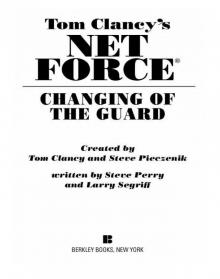 Changing of the Guard
Changing of the Guard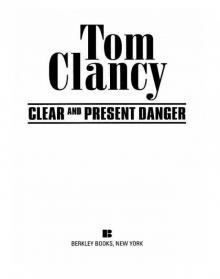 Clear and Present Danger
Clear and Present Danger Hounds of Rome
Hounds of Rome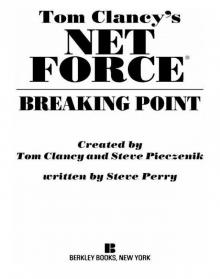 Breaking Point
Breaking Point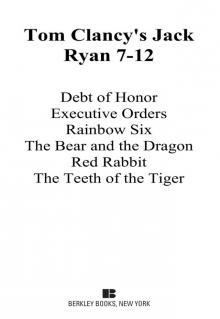 Tom Clancy's Jack Ryan Books 7-12
Tom Clancy's Jack Ryan Books 7-12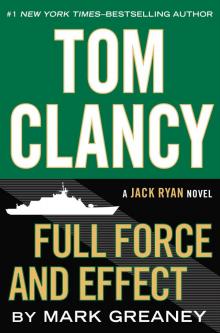 Full Force and Effect
Full Force and Effect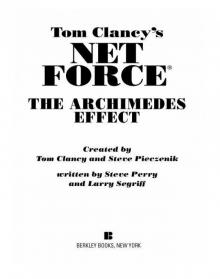 The Archimedes Effect
The Archimedes Effect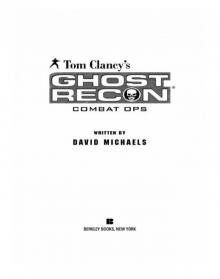 Combat Ops
Combat Ops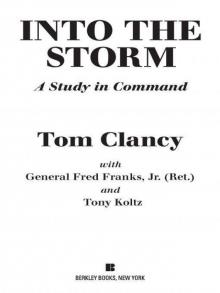 Into the Storm: On the Ground in Iraq
Into the Storm: On the Ground in Iraq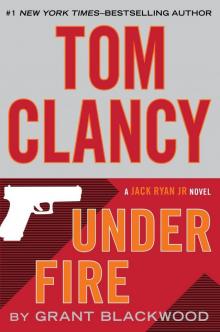 Under Fire
Under Fire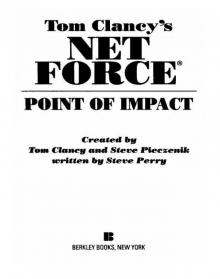 Point of Impact
Point of Impact Red Rabbit
Red Rabbit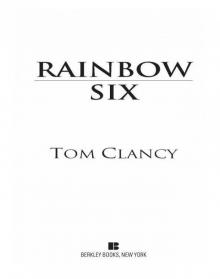 Rainbow Six
Rainbow Six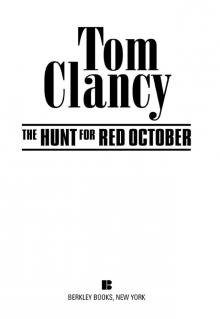 The Hunt for Red October
The Hunt for Red October The Teeth of the Tiger
The Teeth of the Tiger Conviction (2009)
Conviction (2009)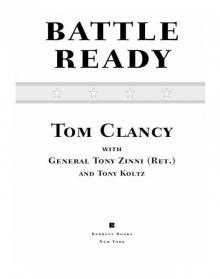 Battle Ready
Battle Ready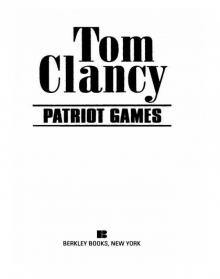 Patriot Games
Patriot Games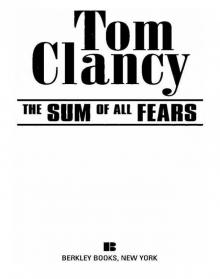 The Sum of All Fears
The Sum of All Fears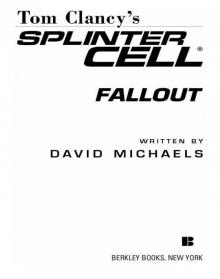 Fallout (2007)
Fallout (2007) Red Storm Rising
Red Storm Rising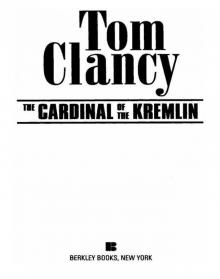 The Cardinal of the Kremlin
The Cardinal of the Kremlin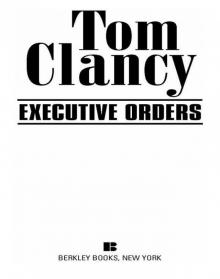 Executive Orders
Executive Orders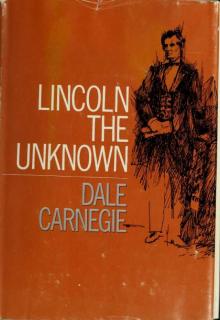 Lincoln, the unknown
Lincoln, the unknown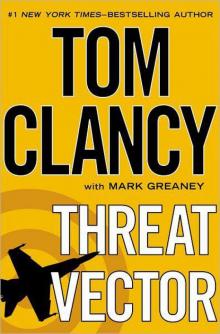 Threat Vector
Threat Vector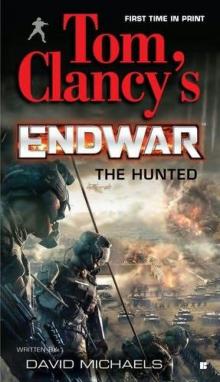 The Hunted
The Hunted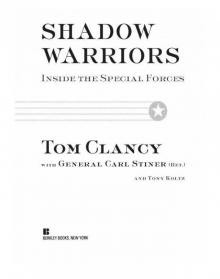 Shadow Warriors: Inside the Special Forces
Shadow Warriors: Inside the Special Forces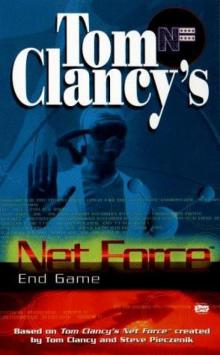 End Game
End Game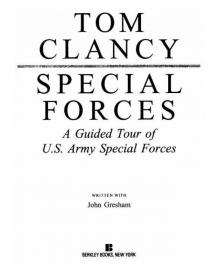 Special Forces: A Guided Tour of U.S. Army Special Forces
Special Forces: A Guided Tour of U.S. Army Special Forces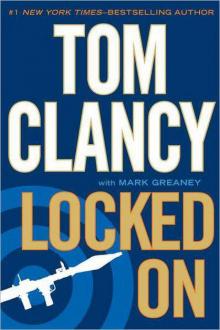 Locked On
Locked On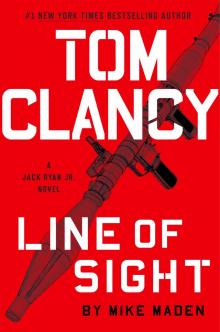 Line of Sight
Line of Sight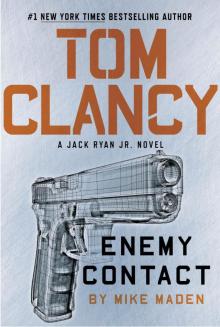 Tom Clancy Enemy Contact - Mike Maden
Tom Clancy Enemy Contact - Mike Maden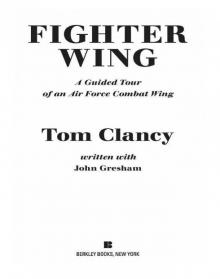 Fighter Wing: A Guided Tour of an Air Force Combat Wing
Fighter Wing: A Guided Tour of an Air Force Combat Wing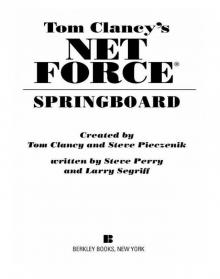 Springboard
Springboard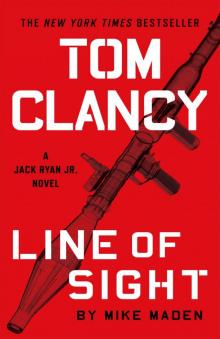 Line of Sight - Mike Maden
Line of Sight - Mike Maden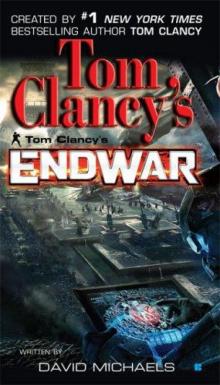 EndWar
EndWar Dead or Alive
Dead or Alive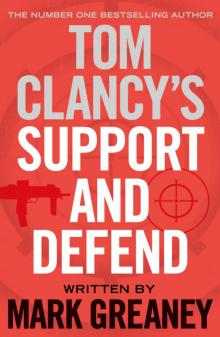 Tom Clancy Support and Defend
Tom Clancy Support and Defend Checkmate
Checkmate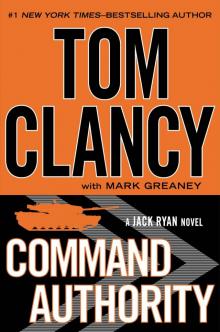 Command Authority
Command Authority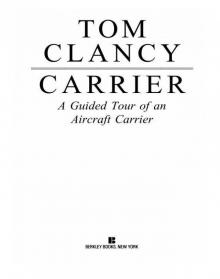 Carrier: A Guided Tour of an Aircraft Carrier
Carrier: A Guided Tour of an Aircraft Carrier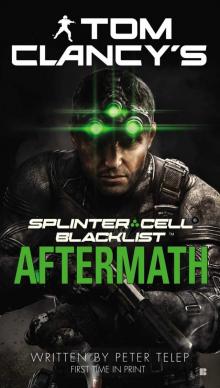 Blacklist Aftermath
Blacklist Aftermath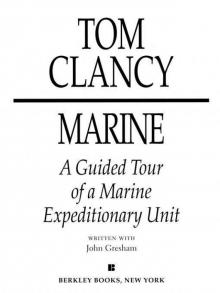 Marine: A Guided Tour of a Marine Expeditionary Unit
Marine: A Guided Tour of a Marine Expeditionary Unit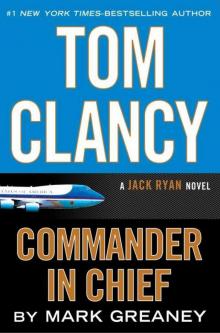 Commander-In-Chief
Commander-In-Chief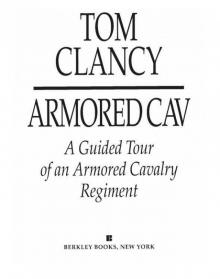 Armored Cav: A Guided Tour of an Armored Cavalry Regiment
Armored Cav: A Guided Tour of an Armored Cavalry Regiment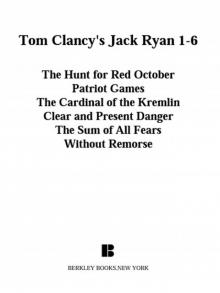 Tom Clancy's Jack Ryan Books 1-6
Tom Clancy's Jack Ryan Books 1-6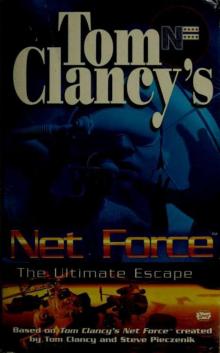 The Ultimate Escape
The Ultimate Escape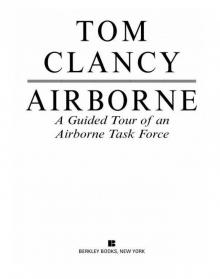 Airborne: A Guided Tour of an Airborne Task Force
Airborne: A Guided Tour of an Airborne Task Force Debt of Honor
Debt of Honor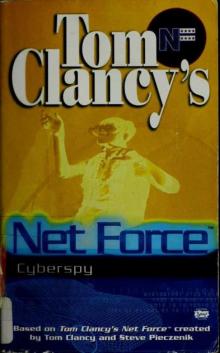 Cyberspy
Cyberspy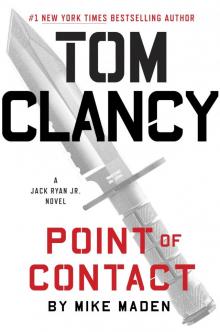 Point of Contact
Point of Contact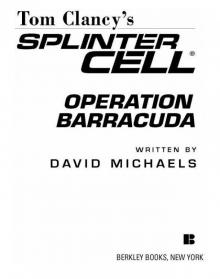 Operation Barracuda (2005)
Operation Barracuda (2005)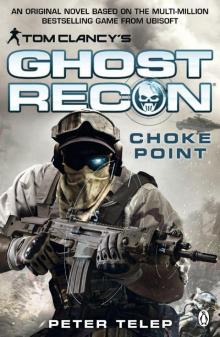 Choke Point
Choke Point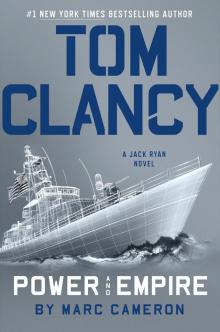 Power and Empire
Power and Empire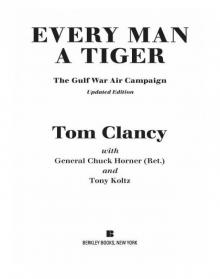 Every Man a Tiger: The Gulf War Air Campaign
Every Man a Tiger: The Gulf War Air Campaign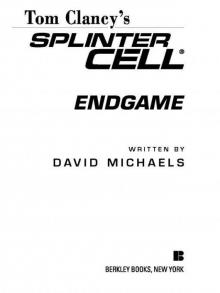 Endgame (1998)
Endgame (1998)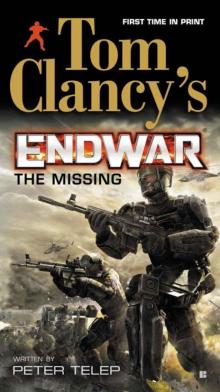 EndWar: The Missing
EndWar: The Missing Splinter Cell (2004)
Splinter Cell (2004)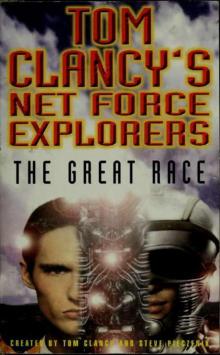 The Great Race
The Great Race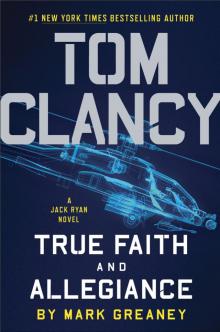 True Faith and Allegiance
True Faith and Allegiance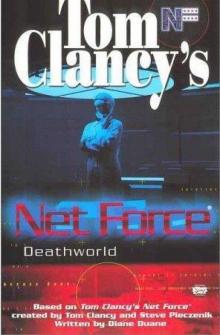 Deathworld
Deathworld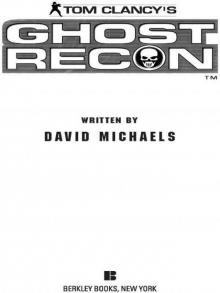 Ghost Recon (2008)
Ghost Recon (2008)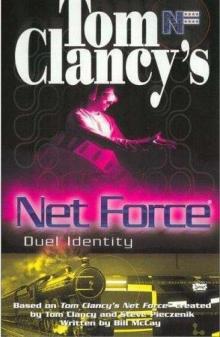 Duel Identity
Duel Identity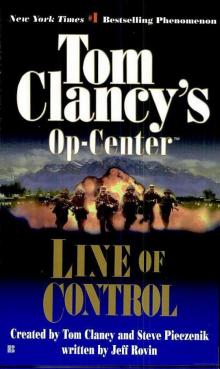 Line of Control o-8
Line of Control o-8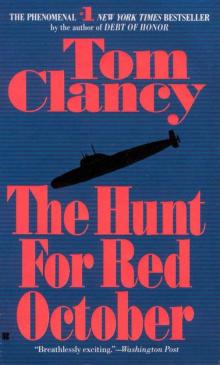 The Hunt for Red October jr-3
The Hunt for Red October jr-3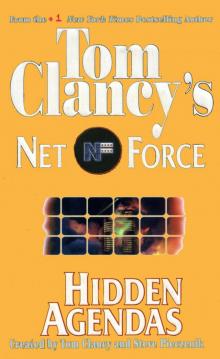 Hidden Agendas nf-2
Hidden Agendas nf-2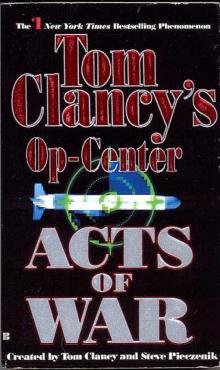 Acts of War oc-4
Acts of War oc-4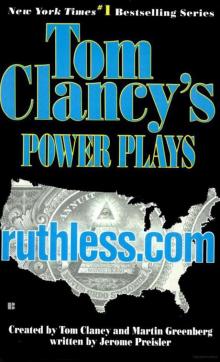 Ruthless.Com pp-2
Ruthless.Com pp-2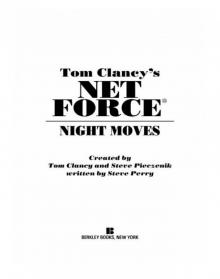 Night Moves
Night Moves The Hounds of Rome - Mystery of a Fugitive Priest
The Hounds of Rome - Mystery of a Fugitive Priest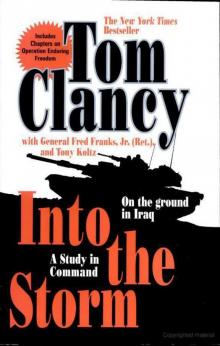 Into the Storm: On the Ground in Iraq sic-1
Into the Storm: On the Ground in Iraq sic-1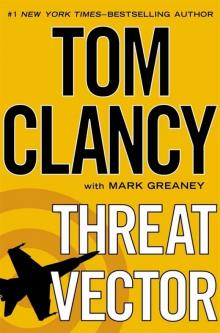 Threat Vector jrj-4
Threat Vector jrj-4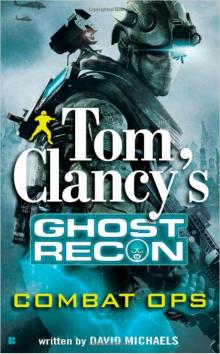 Combat Ops gr-2
Combat Ops gr-2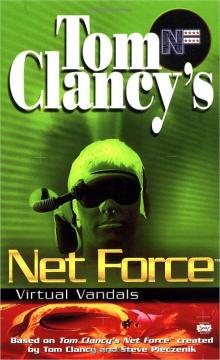 Virtual Vandals nfe-1
Virtual Vandals nfe-1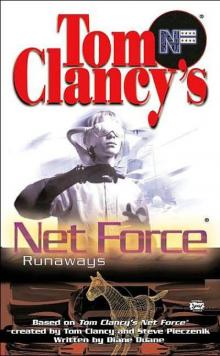 Runaways nfe-16
Runaways nfe-16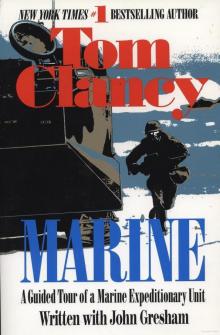 Marine: A Guided Tour of a Marine Expeditionary Unit tcml-4
Marine: A Guided Tour of a Marine Expeditionary Unit tcml-4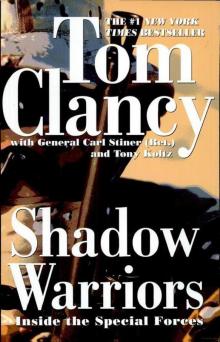 Shadow Warriors: Inside the Special Forces sic-3
Shadow Warriors: Inside the Special Forces sic-3 Jack Ryan Books 1-6
Jack Ryan Books 1-6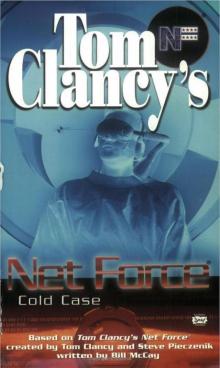 Cold Case nfe-15
Cold Case nfe-15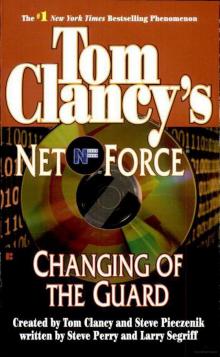 Changing of the Guard nf-8
Changing of the Guard nf-8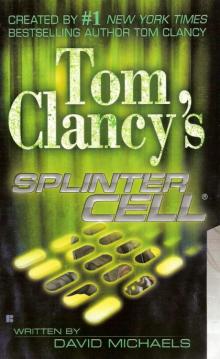 Splinter Cell sc-1
Splinter Cell sc-1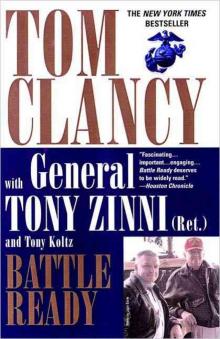 Battle Ready sic-4
Battle Ready sic-4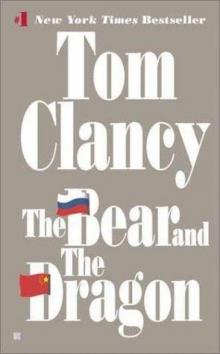 The Bear and the Dragon jrao-11
The Bear and the Dragon jrao-11 Fighter Wing: A Guided Tour of an Air Force Combat Wing tcml-3
Fighter Wing: A Guided Tour of an Air Force Combat Wing tcml-3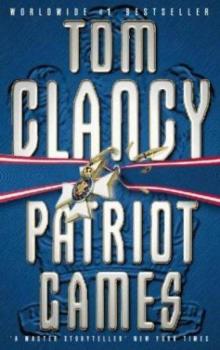 Patriot Games jr-1
Patriot Games jr-1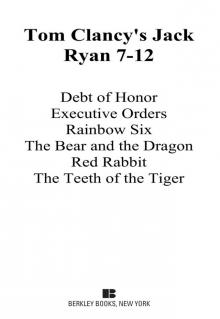 Jack Ryan Books 7-12
Jack Ryan Books 7-12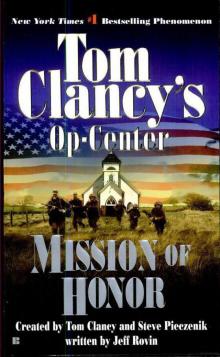 Mission of Honor o-9
Mission of Honor o-9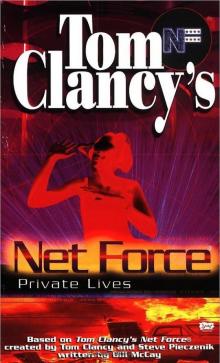 Private Lives nfe-9
Private Lives nfe-9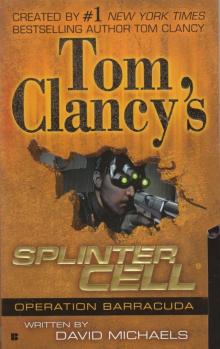 Operation Barracuda sc-2
Operation Barracuda sc-2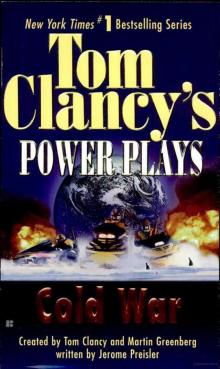 Cold War pp-5
Cold War pp-5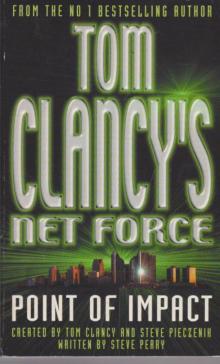 Point of Impact nf-5
Point of Impact nf-5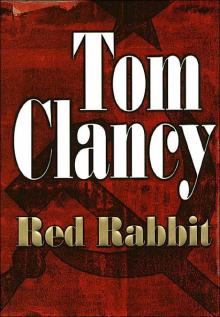 Red Rabbit jr-9
Red Rabbit jr-9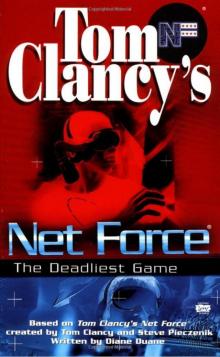 The Deadliest Game nfe-2
The Deadliest Game nfe-2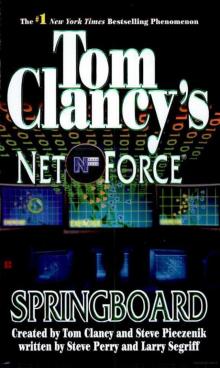 Springboard nf-9
Springboard nf-9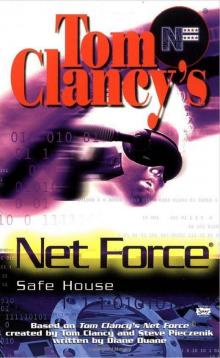 Safe House nfe-10
Safe House nfe-10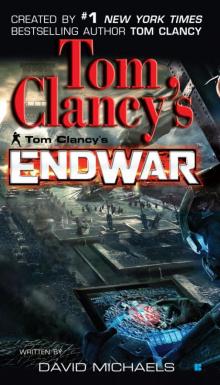 EndWar e-1
EndWar e-1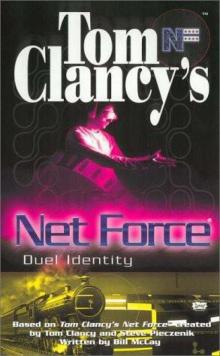 Duel Identity nfe-12
Duel Identity nfe-12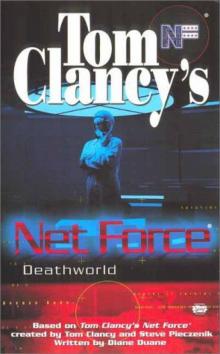 Deathworld nfe-13
Deathworld nfe-13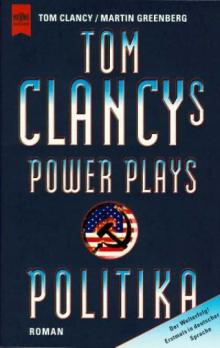 Politika pp-1
Politika pp-1 Rainbow Six jr-9
Rainbow Six jr-9 Tom Clancy's Power Plays 1 - 4
Tom Clancy's Power Plays 1 - 4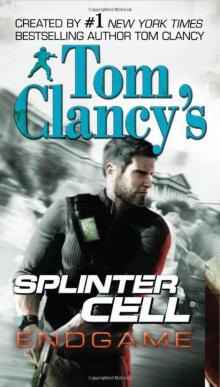 Endgame sc-6
Endgame sc-6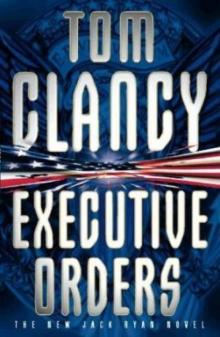 Executive Orders jr-7
Executive Orders jr-7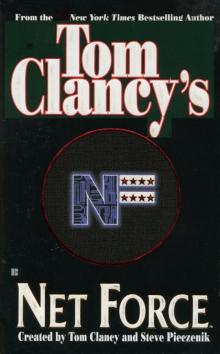 Net Force nf-1
Net Force nf-1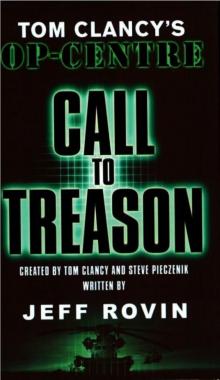 Call to Treason o-11
Call to Treason o-11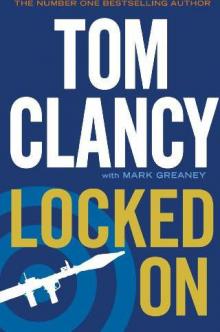 Locked On jrj-3
Locked On jrj-3 Against All Enemies
Against All Enemies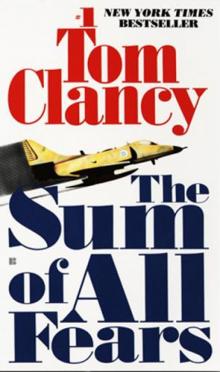 The Sum of All Fears jr-7
The Sum of All Fears jr-7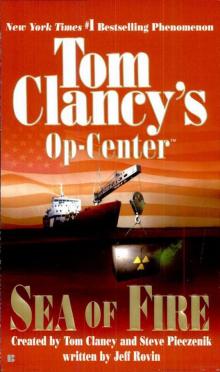 Sea of Fire o-10
Sea of Fire o-10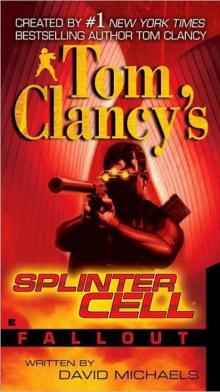 Fallout sc-4
Fallout sc-4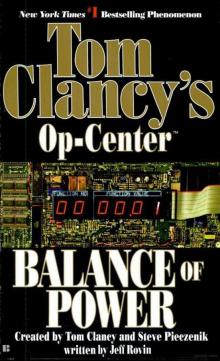 Balance of Power o-5
Balance of Power o-5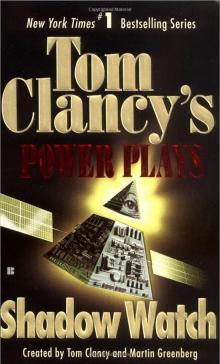 Shadow Watch pp-3
Shadow Watch pp-3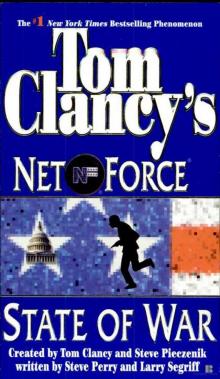 State of War nf-7
State of War nf-7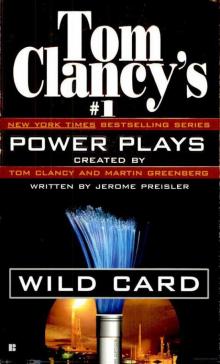 Wild Card pp-8
Wild Card pp-8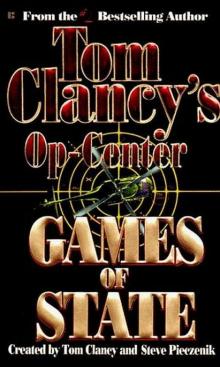 Games of State o-3
Games of State o-3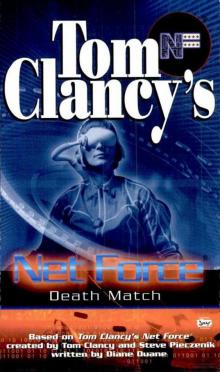 Death Match nfe-18
Death Match nfe-18 Against All Enemies mm-1
Against All Enemies mm-1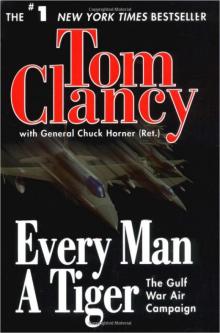 Every Man a Tiger: The Gulf War Air Campaign sic-2
Every Man a Tiger: The Gulf War Air Campaign sic-2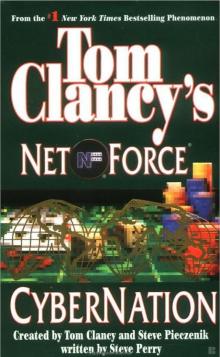 Cybernation nf-6
Cybernation nf-6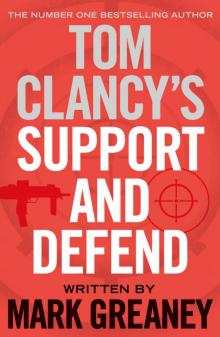 Support and Defend
Support and Defend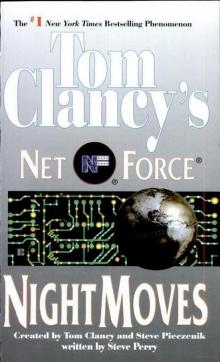 Night Moves nf-3
Night Moves nf-3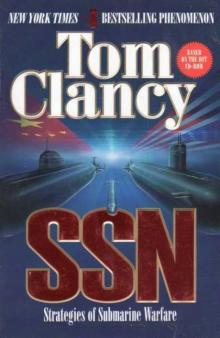 SSN
SSN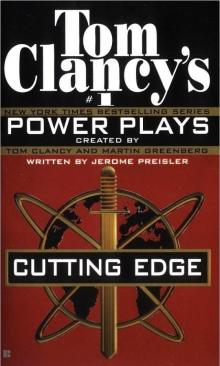 Cutting Edge pp-6
Cutting Edge pp-6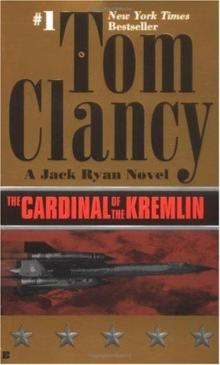 The Cardinal of the Kremlin jrao-5
The Cardinal of the Kremlin jrao-5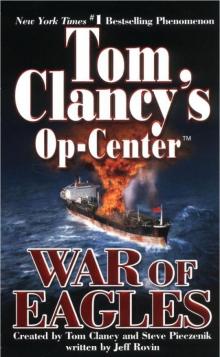 War of Eagles o-12
War of Eagles o-12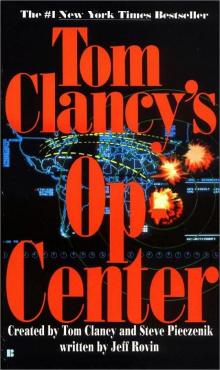 Op-Center o-1
Op-Center o-1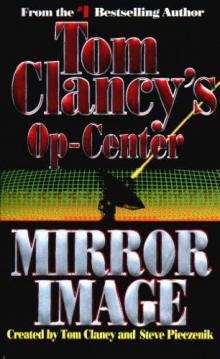 Mirror Image o-2
Mirror Image o-2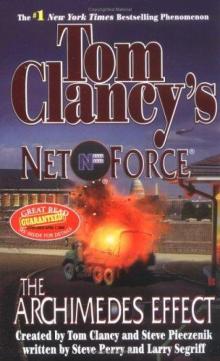 The Archimedes Effect nf-10
The Archimedes Effect nf-10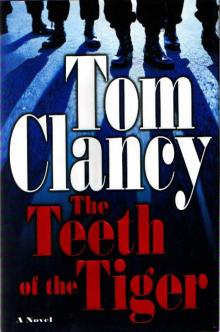 Teeth of the Tiger jrj-1
Teeth of the Tiger jrj-1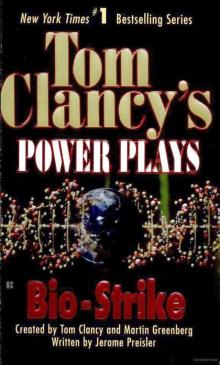 Bio-Strike pp-4
Bio-Strike pp-4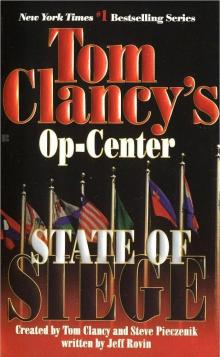 State of Siege o-6
State of Siege o-6 Debt of Honor jr-6
Debt of Honor jr-6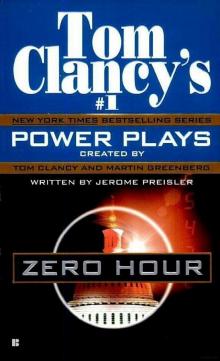 Zero Hour pp-7
Zero Hour pp-7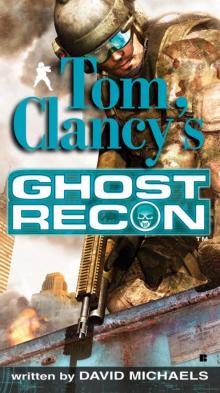 Ghost Recon gr-1
Ghost Recon gr-1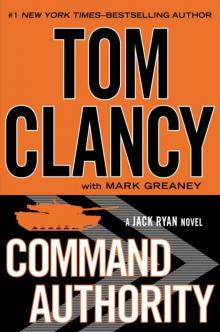 Command Authority jr-10
Command Authority jr-10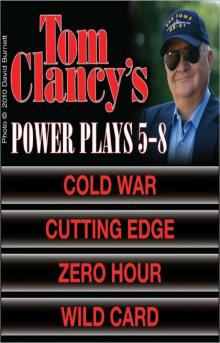 Tom Clancy's Power Plays 5 - 8
Tom Clancy's Power Plays 5 - 8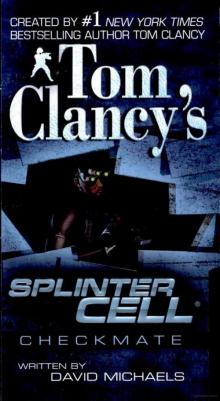 Checkmate sc-3
Checkmate sc-3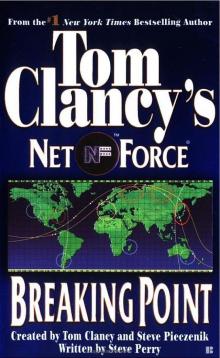 Breaking Point nf-4
Breaking Point nf-4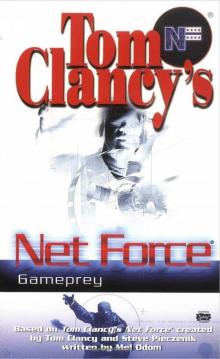 Gameprey nfe-11
Gameprey nfe-11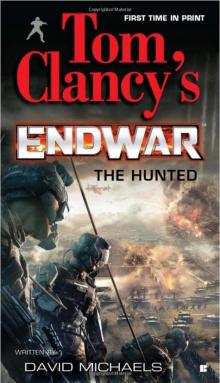 The Hunted e-2
The Hunted e-2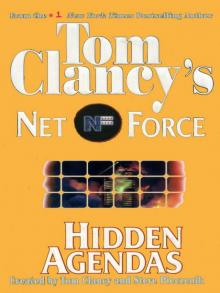 Hidden Agendas
Hidden Agendas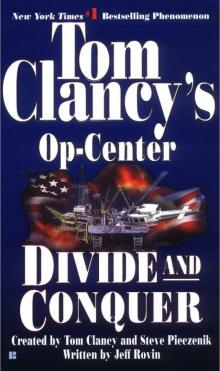 Divide and Conquer o-7
Divide and Conquer o-7